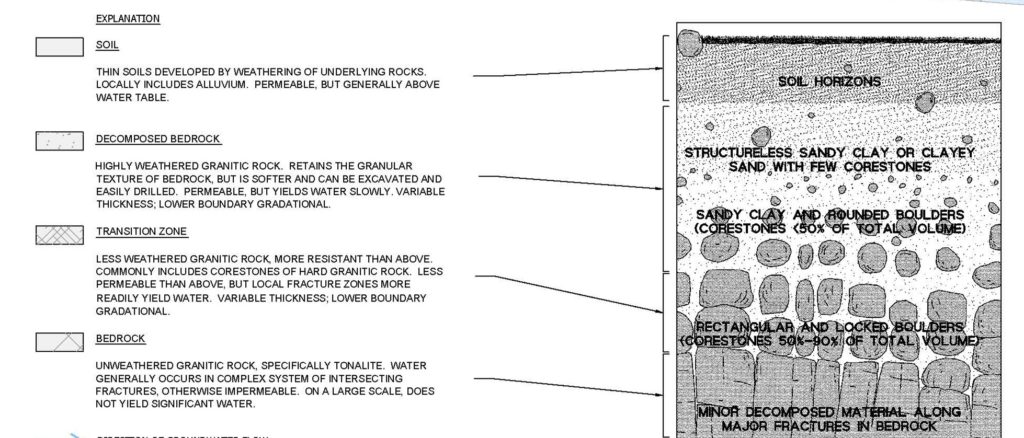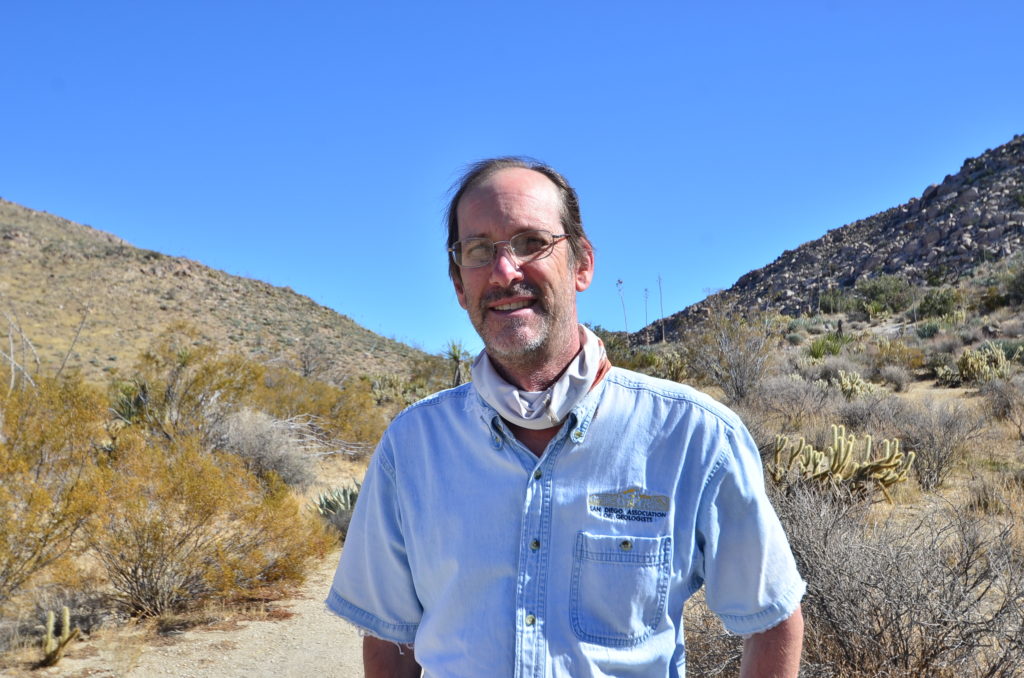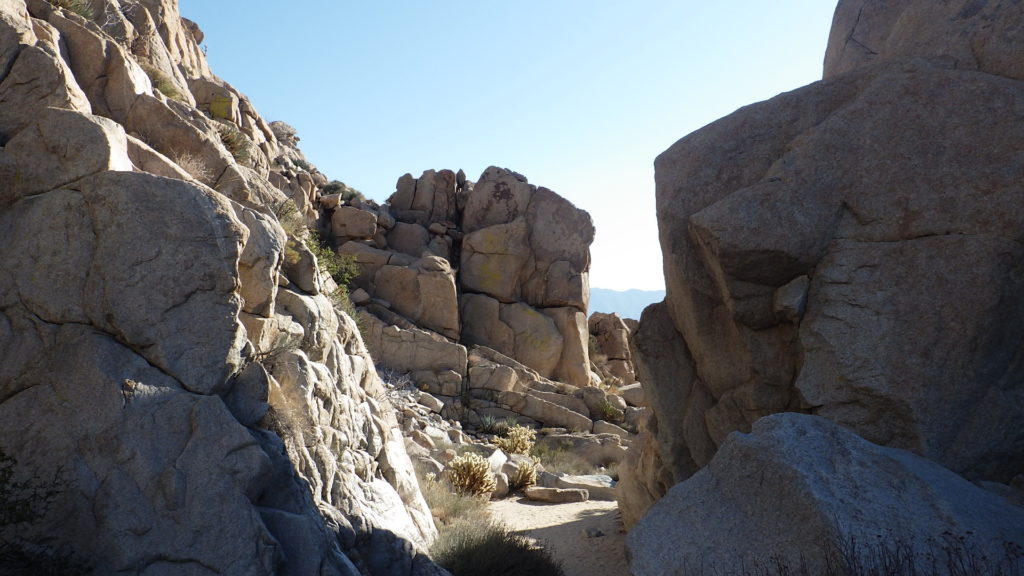You know there’s groundwater contamination problem. Before jumping into the remedial design, it’s critical to understand the subsurface geology of your site. The geology and lithology shape the distribution of contaminants and when there’s fractured bedrock, you’re facing a whole new set of challenges for successful site characterization and remediation. Successful groundwater remediation depends on understanding the unique flow patterns and fracture system intricacies.
In this blog, I’ll cover the big picture understanding of the challenges posed by fractured bedrock and offer considerations for characterizing the distribution of groundwater contamination and developing strategies for remediation in fractured bedrock systems.
Understanding Groundwater Flow Patterns
Groundwater contamination problems often arise in sedimentary basins with definable aquifers and aquitards. The Los Angeles Basin and San Joaquin Valley are typical examples. Contaminant identification and transport mapping may be fairly straightforward under these conditions. When contaminated groundwater occurs in fractured bedrock, such as granitic rock, identifying the source or transport pathway is more complex.
When drawing groundwater samples from fractured bedrock, the water is produced from a series of discrete fractures rather than a sedimentary aquifer of known thickness. Figure 1 illustrates the flow pattern and migration of contaminants through fractures.

The subsurface profile of weathered granitic rock as shown in Figure 2 aids in understanding how contaminants may infiltrate from a near-surface spill or leak, migrate to groundwater, and ultimately travel in the dissolved phase through a fracture system.

The soil and decomposed bedrock intervals are porous, allowing impacted groundwater to migrate similarly to a typical aquifer, although hydraulic conductivity is lower than for sandy sedimentary strata. The transition zone represents fractured bedrock that is highly weathered, but not decomposed to a porous media. Groundwater migration through the transition zone is highly variable but appears to be preferential through more highly fractured and weathered portions.
Fractured granitic bedrock characterizes the deepest hydrogeologic unit, where impacted groundwater flows exclusively through connected fractures, but not through disconnected or ‘dead-end’ fractures. On a sufficiently large scale, groundwater flow through fractured bedrock is analogous to flow through a porous media, responding to local gradients. Local hydraulic gradients may be affected by the pumping of wells for irrigation or municipal supply, causing some distortion in the configuration of the contaminant plumes towards the pumping centers.
Understanding the Fractured Bedrock System
However, attempting to characterize groundwater flow to the individual fracture level is complicated by fracture density, variations in connectivity of fractures, fracture orientations, the width and therefore the flow capacity of a given fracture, and the overall depth of the fractured bedrock system. A schematic view of contaminated groundwater flow through a complex fracture system is illustrated in Figure 3.

Figure 3 caption: image from Quinn, P., J. Cherry and B. Parker, 2013. The use of straddle packer testing to hydraulically characterize rock boreholes for contaminant transport studies. Presentation to the Solinst Symposium, November 7, 2013.
Monitoring the dispersion of decreasing concentrations of a contaminant in groundwater gives us a general understanding of flow through these fracture networks. The example in Figure 3 uses red shading to indicate higher concentrations and green for lower concentrations. You can see the contaminant concentrations decrease with increasing distance from the source through a hypothetical fracture network. The flow is left to right from a point source and could equally represent a plan view or cross section. Such a fracture network illustrates the technical impracticability of identifying individual fractures through which preferential flow occurs.
Characterizing Groundwater Contamination in Fractured Bedrock: Composite vs Discrete Sampling
This understanding can be applied when characterizing the distribution of groundwater contamination or developing strategies for remediation. For example, rather than designing a monitoring well field based on sedimentary or “layer cake” geology, well depths and screen intervals must take into account the weathering profile shown in Figure 2.
A “shallow zone” well may be intended to sample the porous weathered rock interval, and drilling would cease when hard bedrock is encountered. A “deep zone” well would seal off the upper weathered interval and be screened across a greater length than usual in order to obtain a composite sampling of many individual fractures. Such a well can be understood as treating the fractured zone as if it were a porous media on a very large scale.
Groundwater samples collected from such wells are understood as providing composite groundwater quality data over the fractures within the entire screened or open interval. If data for more a more restricted interval is needed, depth-discrete sampling methods or even packers could be used to isolate specific intervals, particularly if the monitoring point is in an open borehole (common for production wells completed in fractured bedrock).
Remediation Design for Fractured Bedrock Requires Longer Timeframe
When designing a remediation system, an extraction well screened over a large interval will produce water that represents the entire interval with more open and productive fractures producing most of the water, whether or not they represent the most contaminated intervals. Depth-discrete sampling could effectively be used to ‘target’ a specific interval for remediation, aiding in the design of an extraction well in the same borehole or a nearby location.
Even if an extraction well produces from less contaminated fractures, the stress on the overall fracture system may impose a gradient that affects the flow regime locally, restricting transport of contaminated groundwater through the area and eventually capturing groundwater flowing through nearby open fractures. Due to the scale and variable nature of a complex interconnected fracture system, however, remediation of contaminated groundwater in a fractured bedrock regime requires substantially more time than for a comparable degree of contamination in a sedimentary aquifer.
Identifying Fracture Zones
In natural bedrock, fracture systems are not randomly or evenly distributed, but generally develop in response to regional tectonic stresses during and after uplift of the plutonic intrusion. Identifying major fracture zones in a study area can aid in the characterization of preferred flow paths, refining the ‘target’ areas for further evaluation. This can be done using surface geophysical methods, LIDAR, and/or aerial photography interpretation.
A Case Study
Read this case study to see how Hargis addressed multiple contaminants of concern, and soil and groundwater contamination in fractured bedrock at a California Superfund Site.
Remedial Investigation in Fractured Bedrock
If you’re facing the challenge of site characterization of groundwater contamination in fractured bedrock conditions, let’s connect. We can develop a strategy unique to your site conditions saving you precious time and money.

ABOUT THE AUTHOR
Greg Cranham
Senior Geologist, PG, CEG
Hargis + Associates
gcranham@hargis.com
www.hargis.com
For more than 30 years, Greg Cranham has been interpreting complex environmental data and historical records to help clients communicate critical issues in a clear and accurate manner. Cranham specializes in geologic mapping & interpretation, lithologic logging of wells and boreholes, air photo interpretation, historical document review, soil and groundwater sampling programs, and soil vapor surveys. Cranham is active in several professional organizations, and is a past president of the San Diego Association of Geologists.

